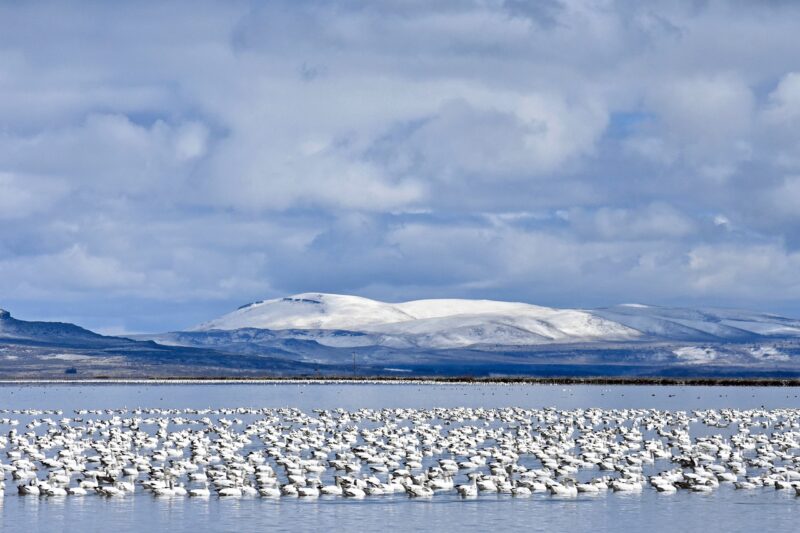The Science Behind Fish Migration and How It Impacts Global Ecosystems
November 11, 2024

Fish migration is a fascinating phenomenon that plays a crucial role in aquatic ecosystems around the world. It refers to the movement of fish populations from one habitat to another, often in response to environmental cues such as changes in temperature, salinity, or food availability. Migration can be a remarkable journey, sometimes spanning thousands of miles, and it impacts not only fish populations but also the entire ecosystem they inhabit.
1. The Basics of Fish Migration
Fish migration generally falls into two main categories:
- Seasonal Migration: This occurs at specific times of the year, often linked to breeding or feeding cycles. For example, salmon migrate upstream from the ocean to freshwater rivers to spawn, while many species move into warmer waters during colder months.
- Daily Migration: Fish often exhibit daily vertical migrations, moving up and down in the water column in response to light levels and predation pressures. During the day, they may stay deeper to avoid predators and come nearer to the surface at night to feed.
Migration is not only vital for individual fish species but also essential for maintaining the health of aquatic ecosystems. It ensures genetic diversity, facilitates nutrient cycling, and supports complex food webs.
2. The Triggers of Fish Migration
Several factors trigger fish migration, including:
- Environmental Cues: Changes in daylight hours and water temperature are critical indicators for fish. For instance, as temperatures rise in spring, many species begin their upstream journeys to spawn. Conversely, as fall approaches and waters cool, many fish migrate back to deeper waters or the ocean.
- Food Availability: Fish often migrate to areas where food sources are plentiful. For example, many fish species will move into river estuaries during spawning periods when the food supply is abundant due to nutrient influx from freshwater sources.
- Reproductive Needs: The requirement to find suitable spawning grounds often drives migration. Species like the Atlantic salmon are driven by an instinctual need to return to their natal rivers to spawn, ensuring the survival of their species.
These factors intertwine, creating a complex web of interactions that govern when and where fish migrate.
3. Migration Routes and Challenges
Fish migrate across various aquatic environments, including rivers, lakes, and oceans. They often follow specific migration routes known as migratory corridors. However, these routes are not without challenges:
- Barriers: Natural barriers such as waterfalls or man-made structures like dams can block migration paths, severely affecting fish populations. The construction of fish ladders and other solutions is essential to help fish navigate around these obstacles.
- Climate Change: Global climate change is altering aquatic habitats, leading to changes in water temperature, flow patterns, and the availability of spawning grounds. As fish respond to these changes, entire migration patterns may shift, impacting ecosystems and fish viability.
- Overfishing: Unsustainable fishing practices can deplete fish populations, disrupting migration patterns and the balance of aquatic ecosystems. Overfishing can lead to a decline in predators or prey, causing ripple effects throughout the food web.
It is crucial for policymakers, conservationists, and local communities to consider these issues when developing plans to manage fish populations and protect their migratory routes.
4. The Ecological Importance of Fish Migration
Fish migration plays a significant role in maintaining the health of ecosystems:
- Nutrient Transport: Migratory fish, such as salmon, help transport nutrients from the ocean to freshwater ecosystems. When these fish spawn and die, they leave behind a significant nutrient load, enriching the riverine ecosystems and supporting various organisms, including plants and invertebrates.
- Biodiversity: Migration contributes to genetic diversity within fish populations. By mixing and interbreeding in different habitats, migratory fish enhance genetic variation, making populations more resilient to disease and environmental changes.
- Food Web Dynamics: The movement of fish across different habitats has profound implications for food webs. Many wildlife species, such as bears, eagles, and otters, rely on migratory fish as a primary food source during specific times of the year. When fish populations decline, these predators face food shortages, affecting their survival and reproductive success.
Understanding the ecological implications of fish migration can help guide conservation efforts and promote sustainable practices in fisheries.
5. Conservation Efforts and Future Directions
Mainstreaming fish migration conservation involves:
- Research and Monitoring: It’s essential to collect data on migratory patterns, population sizes, and the health of habitats. Research can provide insight into how climate and environmental changes impact fish migration and inform conservation strategies.
- Habitat Restoration: Protecting and restoring vital habitats along migration routes can support fish populations. Creating riparian zones, removing barriers, and maintaining water quality can enhance spawning and nursery grounds.
- Community Engagement: Local communities can play a significant role in conservation efforts. Raising awareness about the importance of fish migration and sustainable fishing practices can foster community-led initiatives to protect migratory routes.
Ultimately, collaborative efforts at local, national, and global levels are necessary to ensure the sustainability of fish populations and the ecosystems they inhabit.
Conclusion
Fish migration is a remarkable natural event that has far-reaching impacts on global ecosystems. By understanding the science behind fish migration and recognizing its importance, we can work towards sustainable practices that protect these vital species and the health of our aquatic environments. Continuing research, conservation efforts, and community engagement are crucial steps in ensuring vibrant fish populations for generations to come.








